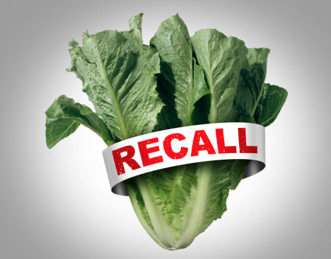Food Safety and Quality: How Robotics Can Transform Iceberg Lettuce Processing
Food safety and quality are paramount concerns in the fresh produce industry. Consumers have become increasingly aware of food-borne illnesses, such as those caused by E. coli O157:H7, and the need for safer processing methods is clear.
One area where this need is particularly critical is in salad processing. Various studies have highlighted the significant risks associated with traditional cutting methods, making a strong case for precise, high speed, minimal touch point automation, such as robotics in processing.
One such study by Gleeson and O'Beirne (2005) revealed that cutting vegetables with a dull knife or tearing tissues allows for better growth of E. coli compared to clean cuts made with a sharp knife.
Similarly, Seo and Frank (1999) observed that E. coli O157 cells preferentially attach to damaged tissues at the cut edges rather than intact surface tissues. This preference for damaged areas, increases the risk of contamination when using traditional coring methods, that may involve many touch points throughout the process.
The purpose of these studies was to determine the potential for transfer of E. coli O157 from a contaminated coring knife to the cored lettuce and to investigate the effect of time and temperature post-coring on the survival and growth of E. coli O157 on lettuce; the findings remain pertinent in accurately highlighting risks associated with cutting and handling of lettuce, regarding the growth of E. coli on damaged tissue.
The potential for contamination and inefficiencies, in traditional coring methods are well-documented in the food processing industry.
Inconsistent Cutting: Manual coring can result in uneven cuts, leading to damaged tissues that are more susceptible to bacterial contamination.
Cross-Contamination: Contaminated coring knives can transfer pathogens like E. coli O157 to the lettuce, posing a significant health risk.
Environmental Factors: Time and temperature post-coring can influence the survival and growth of pathogens, making it crucial to minimize delays in processing.
Hand processing line
Given these challenges, the need for advanced, automated solutions is evident.
We address some of these issues with robotic de-coring systems, designed to enhance food safety and operational efficiency.
Precision Cutting: Robotics operate at consistent high speed, with clean precise cuts every time. This minimizes tissue damage, reducing the risk of bacterial growth.
Reduced Cross-Contamination: Automated systems significantly lower the risk of cross-contamination by minimizing touch points. This is particularly crucial in preventing the transfer of pathogens from contaminated tools to the produce.
Operational Efficiency: Robotic de-coring streamlines workflow, reducing the time between coring and packaging. This rapid processing helps to maintain the integrity of the lettuce and prevent pathogen proliferation.
Enhanced Food Safety: By maintaining stringent hygiene standards and consistent sanitation practices, robotic de-coring systems create a safer processing environment, helping to reduce the incidence of foodborne illnesses.
Cut to Cool time: The crop can be rapidly processed, washed and packaged in a shorter time-frame than would be possible with manual processing.
Extractacore: Robotic de-corer
As the fresh produce industry continues to evolve, the need for automation becomes increasingly apparent. By investing in advanced processing technology, growers and processors can significantly enhance food safety, improve yield, and ensure a higher return on investment.
Rapid post-harvest processing to maintain food safety and quality is key - Delays in processing can increase the risk of pathogen growth, and efficient, automated systems can help mitigate these risks.
Key Takeaways
Enhanced Food Safety: Robotic de-coring can significantly reduce the risk of contamination from pathogens like E. coli O157:H7 by minimizing touch points and crop damage.
Precision Cutting: Accurate and consistent cuts, preserving the quality and integrity of the lettuce.
Operational Efficiency: Automation streamlines the coring process, reducing labor requirements and processing times, and maintaining product freshness.
Hygiene Maintenance: Robotic systems maintain consistent sanitation standards, reducing the potential for cross-contamination compared to manual methods.
Industry Insight: Studies highlight the significant risks associated with traditional coring methods, emphasizing the need for innovative solutions like robotic de-coring.
These points underscore some of the benefits in addressing processing challenges and enhancing food safety and efficiency.
1. Gleeson, E., & O'Beirne, D. (2005). Effects of process severity on survival and growth of Escherichia coli and Listeria innocua on minimally processed vegetables - Access: https://www.sciencedirect.com/science/article/abs/pii/S0956713504001239 2. Seo, K. H., & Frank, J. F. (1999). Attachment of Escherichia coli O157:H7 to Lettuce Leaf Surface and Bacterial Viability in Response to Chlorine Treatment as Demonstrated by Confocal Scanning Laser Microscopy. Journal of Food Protection*, 62(1), 3-9. - Access: Visit the journal's homepage at [Journal of Food Protection](https://www.foodprotection.org/publications/journal-of-food-protection/) and search for the article by title or DOI. Providing direct links to academic articles can be challenging due to access restrictions and subscription requirements. Using a university library or other academic institution's access may be necessary to view the full articles.



